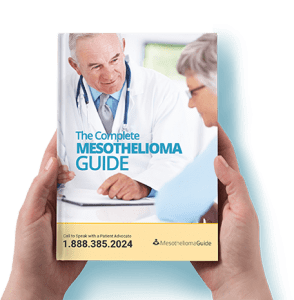Rare Cancers in Women and Children Caused by Exposure to Toxic Household Items
Written for the NABBW by Kimberly Cruz-Montalvo, Community Outreach Representative for www.mesotheliomaguide.com
When women and children are dolling themselves up, the last thing they expect is to be introducing a dangerous carcinogen into their bodies. Unfortunately, many families are unknowingly putting themselves at risk by using asbestos-contaminated products.
Talc Products and Asbestos Exposure
Many talc based products, including cosmetic sets and baby powder, have consistently tested positive for . Both talc and asbestos are naturally occurring minerals that are commonly found in close proximity and questions about the potential contamination have been raised since the 1970s.
 Although asbestos-contaminated talc (or talcum powder) has been a common occurrence, there have not been any major changes to regulations to prevent these issues. Asbestos is a known carcinogen and there is no safe level of exposure, which can lead to rare diseases including lung cancer, asbestosis, mesothelioma, laryngeal cancer, and ovarian cancer. Researchers believe that there is a link between asbestos exposure and breast cancer as well.
Although asbestos-contaminated talc (or talcum powder) has been a common occurrence, there have not been any major changes to regulations to prevent these issues. Asbestos is a known carcinogen and there is no safe level of exposure, which can lead to rare diseases including lung cancer, asbestosis, mesothelioma, laryngeal cancer, and ovarian cancer. Researchers believe that there is a link between asbestos exposure and breast cancer as well.
Which Products are Contaminated?
In June of 2019, the FDA issued an alert asking the public to toss out three make-up products from Claire’s after they tested positive for asbestos, an incident that has continued to plague the retail chain since 2017. Late last year, Claire’s switched to talc-free products to avoid future contaminations. Justice, another children’s store that markets to young girls, also pulled eight products after tests found trace amounts of asbestos in them.
In February 2020, Johnson & Johnson was hit with a $750 million verdict due to lawsuits regarding their baby powder being connected to asbestos contamination. After the lawsuits, Johnson and Johnson decided to pull their talc-based baby powder off the market in North America.
Although talc-based products continue to put women and children at risk due to possible asbestos contamination, there have not been any major changes to regulation of the cosmetic industry. It is suspected that more than 2,100 products on the market contain talc (Environmental Working Group, 2019). Consumer watch groups suggest that the safest bet is to avoid products that contain talcum powder.
 Kimberly Cruz-Montalvo is a community outreach member at Mesothelioma Guide. Her goal is to help spread awareness about mesothelioma through blogs, informative graphics, and other resources. She is a fluent Spanish speaker. In her free time, she enjoys reading science fiction and participating in environmental clean ups.
Kimberly Cruz-Montalvo is a community outreach member at Mesothelioma Guide. Her goal is to help spread awareness about mesothelioma through blogs, informative graphics, and other resources. She is a fluent Spanish speaker. In her free time, she enjoys reading science fiction and participating in environmental clean ups.


